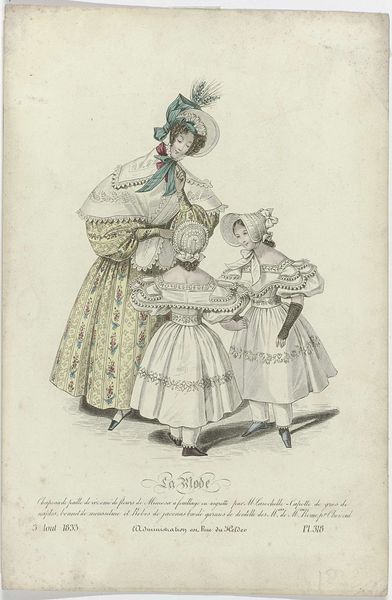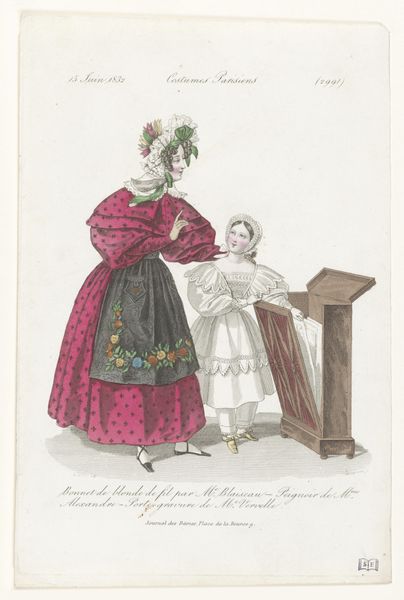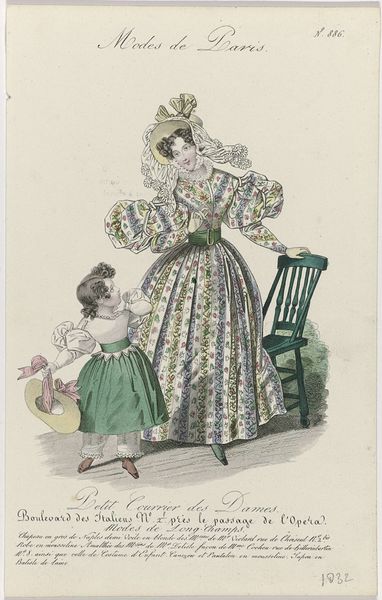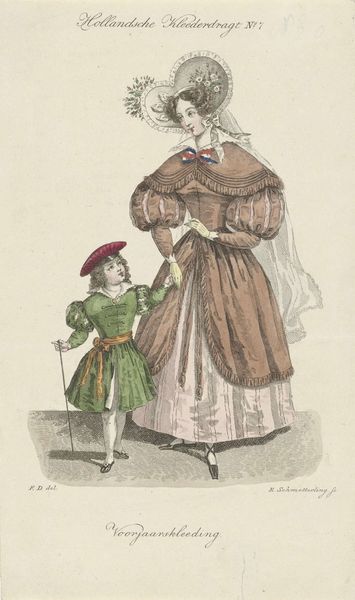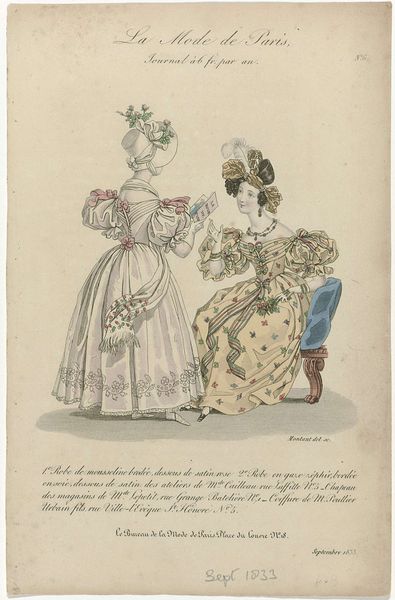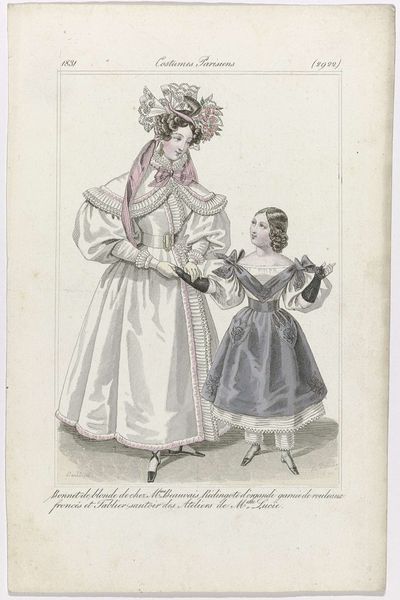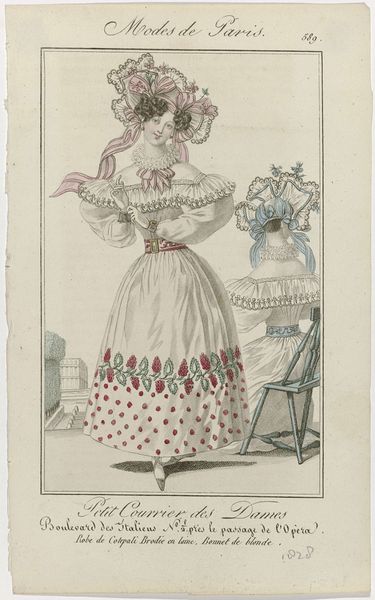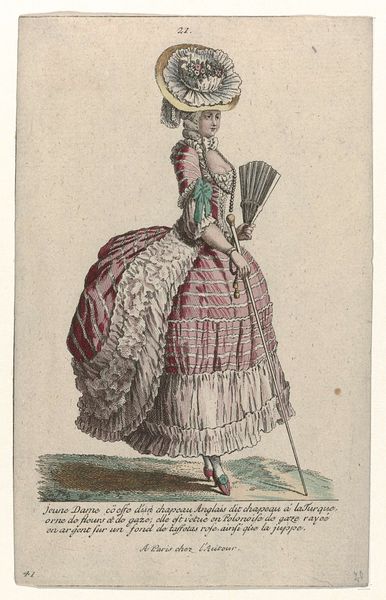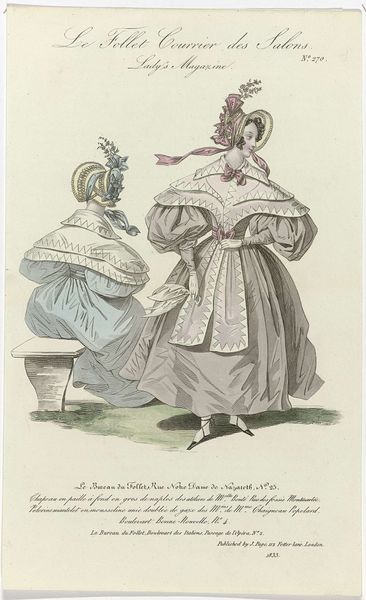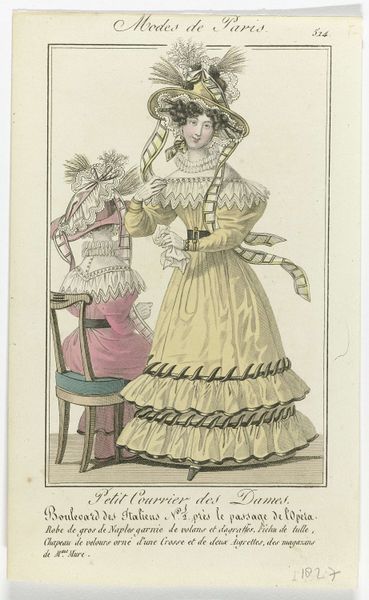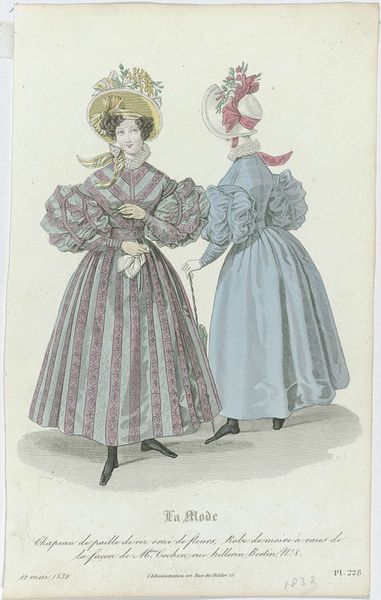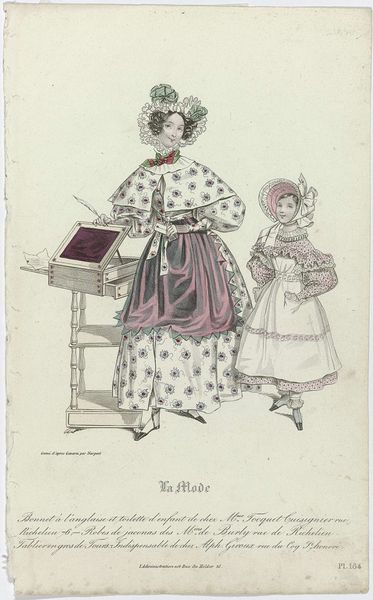
print, watercolor
# print
#
figuration
#
watercolor
#
romanticism
#
watercolour illustration
#
genre-painting
Dimensions: height 236 mm, width 155 mm
Copyright: Rijks Museum: Open Domain
Curator: Let's consider this piece from 1830 called "La Mode," a print with watercolor by Jean-Denis Nargeot. It’s a rather charming depiction of… well, fashion. Artist: It's pure confection! All ruffles and stripes. It makes me think of sugared almonds and those complicated meringues you see in bakery windows. There's almost an ephemeral quality, like these dresses might float away. Curator: Precisely. Notice how the print medium allowed for mass dissemination of fashion trends. These weren't paintings meant to last centuries, but rather, disposable items influencing consumption and social aspirations of the time. Consider the materials too – paper, ink, watercolor – relatively inexpensive, allowing broader access. Artist: I'm captivated by the light, the way the watercolor almost glows on the paper. You know, the rendering is precise, yet dreamy at the same time. Those elaborate bonnets and puffed sleeves…they remind me of captured clouds. And then, the careful stripes. How long do you think this took? Curator: I imagine the division of labor was critical. Nargeot likely designed the plate, which was then printed, with the color added later by workshop assistants, perhaps even women who were kept out of the academies at this time. The garment industry's labor practices connect directly to this. The rise of print media significantly affected dressmaking as trends spread beyond elite circles. It reveals production strategies for an expanding consumer culture. Artist: That brings me back to thinking of its charm—the playful arrangements! One figure holds a book of fabrics perhaps and seems like an intentional invitation into a new fantasy. Do you think the fashion of that moment held the promise of change and something else? Curator: Perhaps, the dresses represented something as an emblem. These women were embracing their style and it was something people strived to keep up with as they adapted to cultural and financial progress in the face of impending class and labor challenges. Artist: A lovely paradox, fashion as aspiration but it's more that style provides its kind of magic; it hints to possibilities in a life of strict rules, but only through beautiful, well-made material things, it also reveals a subtle criticism. Thanks to your view on context, I also think it has power, even when on the page! Curator: I agree; its layered meanings deserve greater attention, and I think that appreciation arises from careful observation of material production. Thank you, also!
Comments
rijksmuseum about 2 years ago
⋮
On launching his society magazine La Mode (1829- 1955), the publisher Girardin criticized other fashion magazines for their ‘stiff, mechanical mannequins’. He wanted pictures that were more modern and animated. In illustrator Paul Gavarni, who had a reputation as the best-dressed man in Paris, he found just the right man to put a fresh spin on the fashion plate and to make the stiff ‘mannequins’ come to life.
Join the conversation
Join millions of artists and users on Artera today and experience the ultimate creative platform.
